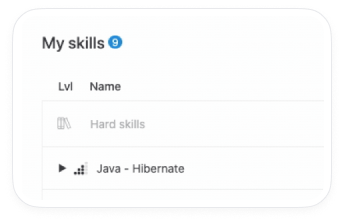What is succession planning?
Whether it’s the next Pope in Rome or the United Kingdom anointing the next successor to its monarch, choosing the ‘Successor’ has always been an important decision. The value of succession planning has been a part of management history since the 19th century when Henri Fayol, a French pioneer, recognized and documented the universal organizational need for succession planning.
In today’s modern organizational structures, there is an ever-increasing demand for the practice. Senior management, as well as HR departments, are aware that to ensure the survival and success of their organizations, they must have the right people in the right places at the right time. If a successor to any vital position in the organization is suddenly required and none have been trained to take it over, the impact can be devastating.
The explanation above definitely doesn’t mean that you should start arranging coronation ceremonies for your staff and upcoming leaders. To understand the concept a little better, let’s get started with what succession planning means in the workplace.
Definition and the need for succession planning in the business world
Succession planning is defined as an organized effort by HR to ensure that the organization’s leadership is being developed for future roles, and encourage individual advancement. The organization must always have employees prepared so that no key position is left open for too long.
2021 proved to everyone that business will no longer remain static. According to a survey conducted by the U.S Bureau of Labor Statistics, nearly 4 million Americans resigned from their jobs in the month of April 2021 while approximately 15 percent more plan to quit their jobs before the start of 2022.
With the waves of mergers, consolidations, the reduction in the ranks of middle management, remote working, and much more, the only way to deal with these changes is to actively cultivate the development of employees so they can prove to be valuable resources when necessary.
Apart from preparing for unexpected employee turnover, succession planning is needed for:
Business Continuity
Succession planning ensures that business operations do not cease simply because a key position becomes vacant due to sudden tragedy, resignation, or any other reason.
Nurturing potential candidates
With effective succession planning, the next possible successor for a key position is groomed and developed at an early stage. This allows a candidate to work on their weaknesses and prepares them for the various challenges they might face in the future.
Recognition of the next successor
By following the succession planning process, it’s possible to identify the right candidate in advance for a key position. Organizations can put the employees through various tests and receive feedback on their performance that helps make the selection process more precise.
Cost reduction
An effective succession planning process can cut costs in terms of saving the time and energy that it would otherwise take to suddenly run recruitment for the top-level staff or a key position, by making the next choice for the role a pre-planned and obvious one.
Enhancing employee morale
By setting up a succession planning process in your organization, your employees will be able to compete fairly for key positions as they’ll have enough time to prove themselves. This also means that they will be motivated to work well as they would know that the organization is setting a path for their career advancement.
Succession planning with an effective leadership development plan
Define the future value needed from your leaders and support them with training and development. Our leadership development template helps bring structure and direction to the whole workforce and helps to focus on common goals seamlessly.
Stages of succession planning
In an ideal world, the perfect candidate for a key role while succession planning would be indicated by a bright and shining halo around their head. Unfortunately, the real world is rarely so straightforward. An effective succession planning process will need to involve the coaching and development of several prospective employees within the organization, or outside, through well-planned assessment and training.
Let’s look at the 4 stages of the succession planning process.
Initiation
In this primary phase, a prospective candidate is trained with knowledge of the business: its value system, guidelines, vision, and so on. This key information is passed on to all candidates so that there is an equal chance for all of them to learn.
Selection
The second phase can be challenging, as HR will need to scrutinize all the prospective employees and understand which one of them has best understood the foundational tenets of the business. Apart from testing the knowledge given to the candidates, in this stage, performance and teamwork skill reviews are conducted by all related departments.
Training
The third stage includes comprehensive training for the selected candidate to prepare them to meet the goals of the organization and to continue guiding the organization towards a bright and successful future.
Transition
This is the stage that the entire process has been building up to – the unfortunate moment when a key position is suddenly vacated, and the successor needs to step in to fill its shoes. The employee, business owner, or CEO (whichever key position retires or moves out) is replaced by the chosen successor who formally takes up the responsibility as their new leadership role.
How will succession planning work for you?
When companies talk about short-term, long-term, proactive, and many other forms of succession planning, it makes the whole process appear more complex than it strictly has to be. When something looks complex, the question that comes to mind is ‘Will it work for me?’. Of course – before you put in the effort, you want to make sure that it will work.
The best way to dispel doubts about the process is to look at real-life examples of the succession process succeeding – and failing – and figuring out why. Let’s see how some organizations benefited from succession planning, compared to others that faced a loss by failing to do so.
McDonald Corp’s pipeline of successful successors
In 2004, McDonald‘s, the famous restaurant brand, displayed a highly inspiring succession plan, managing three successions in two years. Sheer luck wasn’t what got this giant through such turbulent times – but as stable of well-trained executives, who took over the strategy of succession planning as if it were their own. Jim Skinner, a former vice chairman and CEO of McDonald’s, was known for his famous succession planning quote: “Give me the names of two people who could succeed you.”
Harvey-Jones’s succession plan created the company’s future
Harvey-Jones, the chairman of Imperial Chemical Industries (ICI), developed the idea of using succession planning to include and motivate middle management within the organization. He assigned managers to empower other employees and spot hidden talent. They would further assist to develop their skills and abilities. The chosen employees would receive public recognition, as well as financial and emotional incentives. This motivated the chosen candidates to prosper in their work, and Harvey-Jones was able to create a successful future for his company.
Blackberry’s poor succession plan for the former CEO of Blackberry
When the former CEO of Blackberry, Thorsten Heins, failed to pass on all the strengths and weaknesses of the company to a successor, it resulted in the termination of 4,500 people in their workforce and a loss of nearly a billion dollars.
The McCain foods conflict failed to produce a good succession planning outcome
McCain Foods was founded and run by brothers Wallace and Harrison McCain. By the mid-1990s, they were already running rival companies in the same industry, let alone looking for a successor. The company finally had to choose an outsider to run it as both brothers could not decide on who to hand over control of the company.
The above examples make it clear that no matter if your company is big, small, or successful, a smooth transition through effective succession planning from one key employee to another should never be taken for granted.
Solutions by HRForecast
As the human resource-related challenges of the coming year face your organization, HRForecast can help you overcome these impediments. Control the entire succession planning process, develop a roadmap for creating the plan and implement it without any hiccups. Contact us for more details and we’ll get back to you shortly!
Stay up to date with our newsletter
Every month, we’ll send you a curated newsletter with our updates and the latest industry news.



























 info@hrforecast.de
info@hrforecast.de
 +49 89 215384810
+49 89 215384810






 Photo by Ivan Samkov from Pexels
Photo by Ivan Samkov from Pexels